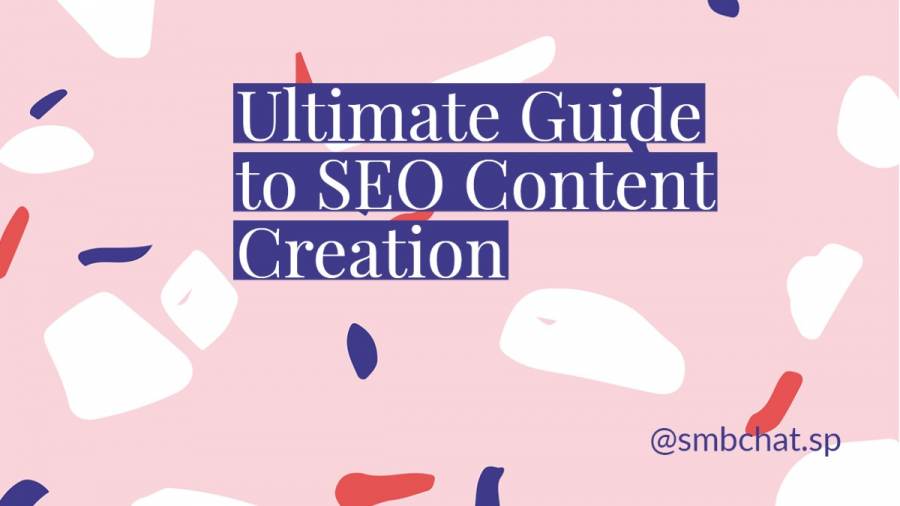SEO Examples to Take You Inside The Mind of Google’s Algorithm
By now, you’ve probably heard and read enough about search engine optimization to write a book. However, reading about SEO is easy; everybody in your industry probably does that.
But just in case you haven't, here's our detailed blog on how to get to the crest of the SEO mountain, one copy at a time.
Implementing it in a blog or website is a different story altogether. And the fact that the Google Algorithm remains uncharted territory for marketers doesn’t help either.
Fortunately, there isn’t a shortage of excellent SEO-curated content out there that generates interest, intrigues audiences, and meets the algorithm's expectations.
Once again, you’ve found yourself in the right place, at the right time. This piece will cover SEO algorithms, writing techniques, examples, and everything in between.
Relevant Reading:
What is a Google Algorithm?
Yes, there is such a thing as a Google algorithm. Think about it; 4.4 million blogs are posted on Google each day, that’s a blog for every two people in Newyork.
Some are masterpieces, others are mediocre, and then there’s the truckload of terrible content.
Faced with the reality that all blogs are not created equal, Google had to find a way to rank these websites on their pages.
Hence the Google algorithm and search engine optimization ensued shortly after. Some of the roles this algorithm plays include:
Ensuring great content is on the first page
The most critical role of this algorithm is ensuring that good content appears on the first page. This is not only critical for customer experience but also for Google’s business model in general.
The algorithm does this by pushing blogs with fewer bounce rates, more shares, more time spent on site, and those that meet user expectations.
Making sure content is credible
Given the scale of Google and the information it holds, disinformation becomes a particular problem. For this reason, Google pushes forward sites that are likely to be credible.
Often, these sites have links to authoritative sources or better yet, receive backlinks from several websites and blogs. So if you need to know how well your website is doing in terms of backlinks, be sure to check it out!
Giving Google customers a great user experience
One thing most people forget is that their target audiences are Google customers too. With that in mind, a terrible blog (say one that loads for 7 seconds) hurts Google's CX.
Similarly, a blog that doesn’t meet searcher intent (or answer specific questions) frustrates Google customers; they won’t rank it.
Putting Users on Google Longer
Google makes money the longer people stay on the site. For this reason, Google rewards the sites with outbound and internal links.
The logic is that once you log into Google to read an article on inflation, you might find a link about the federal reserve, where you’ll find another one about the gold standard and so on.
Without knowing it, you’re spending more time on the site.
Ensuring People Get What They're Looking for
Meeting searcher intent is critical for Google; in fact, it's the basis of their unique value proposition.
Google’s concept is that it’s the most efficient place to find what you’re looking for. The moment you can’t find what you’re looking for, you might move to Bing or DuckDuckGo and Google loses business.
Hence you have to prove to Google that your content matches searcher intent before you rank.
For this reason, the algorithm rewards blogs that focus on meeting searcher intent; these are those with keywords in headers, meta descriptions, URLs, and the body.
What Does SEO Writing Look Like: Examples to Inspire You
The first step to becoming good at SEO is understanding the algorithm. It’s simple; make good credible content that meets searcher intent, and you’re halfway there.
Also, ensure to make it efficient for Google customers to access and use while you’re at it.
Now that you’re past that, it's time for some of that in practice.
Here are a few examples of SEO from websites and blogs that have perfected the art of SEO and satisfied the algorithm:
1. WIRED and the Power of Meta Descriptions
Before titles and introductions, you had the meta description. Nobody will blame you for previously ignoring this part of your blog; it's a meager 60 or 80 characters anyway.
However, the fate of your entire 3000-word piece might depend on it.
Your meta description is the information you display to your reader when your blog shows up in their search results.
To the algorithm, a meta description (or lack of ) implies:
- The blog meets searcher intent through keywords the meta description
- Readers clicking because of the meta description means there is value in the blog
- A lack of any descriptive meta description implies a lack of will to provide value
Despite its importance, you’d be surprised at the number of blogs and websites out there running without content descriptions.
Just having a descriptive meta description puts you halfway there on your journey to mastering SEO. However; there’s an extra mile, and it involves optimizing your meta description for SEO.
You can do what WIRED did and:
- Make your meta description brief ( no more than 155 characters)
- Throw in a few keywords into this meta description
- Make it catchy and compelling to read
- Leverage the art of storytelling
Here's our detailed guide on how to optimize your content for SEO.
2. HUBSPOT: On What Makes Good SEO
By now, you’ve probably been sold on a few SEO and keyword research tools. Nonetheless, there is much more to SEO than sprinkling random keywords on your content.
At its core, search engine optimization is about value. Furthermore, the fact that Google changes its algorithm yearly means that no one can ever claim mastery of this algorithm.
You may not know this, but Google can measure the value your content provides. In fact, they do this each day by measuring:
- The number of people that refer your articles to their friend
- The number of people that leave halfway through your articles
- How many people link back to your blog
- The number of people that find what they’re looking for in your piece
Fortunately, there are several sites and websites to learn from as far as value provision is concerned. Hubspot is at the top of this list. Here’s another blog from Hubspot :
Over the years, Hubspot blogs have become a masterclass on providing value. The site distinguishes itself as an industry standard in terms of SEO content writing. You can too, however you’ll have to first:
- Make your content as actionable as possible
- Find a single brand voice, image, and tone, then stick to it
- Do everything in your power to write relevant content for your audience
- Cut down on fluff and focus on value
- If you haven’t already; start a referral campaign for your content
To make sure all these great pointers stick, you might want to take a look at our exclusive guide on how to write SEO content.
3. Neil Patel: A Masterclass On Readability
We’ve all been there; you open that blog, read the generic introduction and immediately realize that you have better things to do.
9 out of 10 times; you can blame this on the non-readability of the said blog.
And that’s you. Others are not as generous. Statistics show that it takes a person about 50 milliseconds to form an opinion about your website or blog.
To the algorithm, a non readable blog means:
- A poor customer experience for your users ( who are Google customers)
- A lack of investment in your blogs
- It implies that you don’t care about your blog (neither should Google)
In case you forgot, each time somebody clicks out 5 seconds after reading your intro, the algorithm takes notes.
That said, you don’t have to go that far to find impeccable readability when there’s Neil Patel.
His blogs are an excellent example of eye-catching, relatable, and compelling intros that will keep you reading to the end.
His articles stand out because:
- Neil Patel writes in short immersive sentences
- Great use of white space in his articles ( it even fuses into this piece)
- He makes his introductions as compelling as possible
- He leverages the use of creative storytelling
With that in mind, compelling content is not out of reach or a reserve for the few. With just a few adjustments, you can create more readable content. Consider to:
- Leave the long bulky sentences to your competition
- Use infographics and images to break up your page
- Start strong. You’ll never go wrong with a quote, statistic, or anecdote
- Write in the second person; always as if you’re writing to one person, never a group
4. CO Schedule on The Essence of Great Headers
“He who masters the art of writing great headers will never struggle with SEO “ Sun Tzu, the art of war.
If you’ve ever found yourself reading something you hadn’t planned for, the title probably pulled you in.
Often, it’s either two things; an exceptionally crafted title or clickbait.
A title such as “Will Smith marries Chris Rock's mother''; will surely get clicks even from the snobbiest of your target audiences. However, it won’t keep them reading for long.
Furthermore; it won’t be long before the algorithm takes note and ranks you into oblivion.
However, a great title will show Google that there’s something the client likes about your content.
To the algorithm:
- A title with search words has a higher chance of satisfying the searcher's intent
- An article that gets several clicks through its title probably has something to offer the reader
- A descriptive title is less likely to frustrate searchers or Google customers
Fortunately, there’s a way; and that’s taking time and building great titles. You can learn from Co Schedule when it comes to crafting compelling titles. Take another look, and you’ll notice:
- The creative use of numbering which increases readability by 206%
- The value (what’s in it for the customer) is right in the title, e.g., It will make your customers swoon
- The title makes a promise (8 bonus tips) to keep your customers to the end
That said, there’s still time to improve your headers, and it doesn't have to be next month.
With the following tips, you can start today by:
- Avoiding cliches; “killer website content” is so 2019 btw
- Pull at the heartstrings of your audience using emotional triggers
- Adding short-tail keywords within your title
- Creatively throwing numbers, percentages, and ratios into your title
5. Unbounce on Optimizing Your Images
You’ve heard this a thousand times; but in content marketing, a picture is worth a thousand words(sorry), and a few bucks.
Adding a simple image to your blog post goes a long way in setting you apart from the competition. That said, studying the graphics in blogs from Unbounce is an excellent place to start, here’s one:
Nowadays you’re spoilt for choice, there are memes, gifs, animations, infographics, and a sea of graphic images at your disposal. There’s literally no reason to write a wall of text in 2022.
Don’t get us wrong; search engine algorithms can’t process images (yet). However, they can induce from other metrics that a blog with pictures:
- Is More readable since images break up text
- Offers a more immersive experience to the user
- Infographics compliment words
- More aesthetically pleasing, which will engage readers more
With that in mind, the graphics you add to your website will eventually play a role in your search engine ranking.
6. Orbit Media on Why Static URLs Eat Dynamic URLs for Breakfast
One part you’ll rarely ever hear get mentioned in the SEO discussion is your URL. And yes, you guessed it; search engine algorithms do crawl parts of your URL.
You have the option of choosing two URL formats. The easiest is a dynamic URL or address which relies on numbered addresses to index your page. Here’s an example:
Note that this dynamic URL offers no information about the AliExpress product. It’s just numbers galore with no value whatsoever for both the reader and algorithm.
However, why go through all this trouble when you can leverage a static URL for your site?
It’s not only easier for the Google algorithm but is also less of an eyesore and more convenient to your reader. Here’s one from Orbit Media.
Note the differences in how this URL:
- It is brief, to the point, and doesn’t go on forever
- It has short-tail keywords embedded into it
- It is broken down using hyphens
You can also go the extra mile and do things your competitors have never thought of in your URL. Consider slipping into your back-end and:
- Enabling static URLs which gives you the ability to add keywords to your URL
- Leverage hyphens to break up words in your URL
- Make your URL as descriptive as possible but also brief
Why Links Reign Supreme
Links are another essential aspect of your search engine optimization. Those links on your page tell the Google algorithm more than you may realize.
To the algorithm:
- Broken links mean you don’t maintain your site
- Too many links mean you’re compensating for your lack of good content
- Fake links mean that both you( and your content by extension) can’t be trusted
- Backlinks are a vote of confidence, credibility, and authority to your site
- Internal links show that you have supporting content
- Also linking puts readers on Google longer( which benefits Google)
Any article you write in your blog or website will have three types of links.
These are outbound (from other websites), inbound (from your website), and internal links (from your blogs to other blogs you own).
Each article your team crafts should leverage each of these three links creatively and sparingly for lead generation and SEO. While at it, ensure you:
- Use descriptive anchor text for your links
- Avoid generic anchor text, e.g. “click this link,” etc.
- Don’t use entire sentences or paragraphs for your links
- Focus on quality instead of quantity
- Using links sparingly, less is more
7. Forbes: A Lesson On Reducing Website Load Times
Your page loading time is yet another essential element of your SEO. Unfortunately, in this fast-paced world, good content can never make up for a sluggish site.
The statistics on this aren’t encouraging either.
You’ve probably heard of gone in 3 seconds rule. It states that the bulk of your readers will abandon your site if it takes more than three seconds to load.
To the algorithm, a slow loading website means:
- A poor customer experience for your readers ( who are Google customers)
- Your blog or domain may have safety issues, especially through redirects
- Cost-cutting or lack of maintenance on your end
That said, most search algorithms will see to it that a slow-loading site never makes it to their first search engine page.
Fortunately, like Forbes, you can do a lot to improve your website load times without breaking the bank. Consider:
- Reduce redirects to a minimum
- Deactivate the unnecessary plugins cluttering your back end
- Minify your CSS, Javascript and HTML (removing unnecessary comments, spaces, characters etc)
That’s a Lot of Work, But It’s Nothing Zoey Can’t Handle
Hopefully, at the end of this blog, you’re motivated and fired up, and can’t wait to write your next SEO blog.
Trust me, you don’t want to, even if you have already procured the top 6 SEO writing assistants available today to help with the heavy lifting.
The motivation dies out fast, and you’ll soon be back to writing average pieces.
You need a break. Think about it; you wear enough hats at your organization already, and you don’t want SEO writing might be the straw that breaks the camel's back.
How about you outsource it to a specialized expert? Let us do what we do best (write your pieces) so that you can do what you do best (handle everything else).
Here at Zoey, all we do is write great content, generate leads, and drink coffee. Our SEO writing services are impeccable, but don't take our word for it; try them yourself. Contact us today to get started!
Photo by Diggity Marketing from Unsplash. Thanks, Diggity:)

















